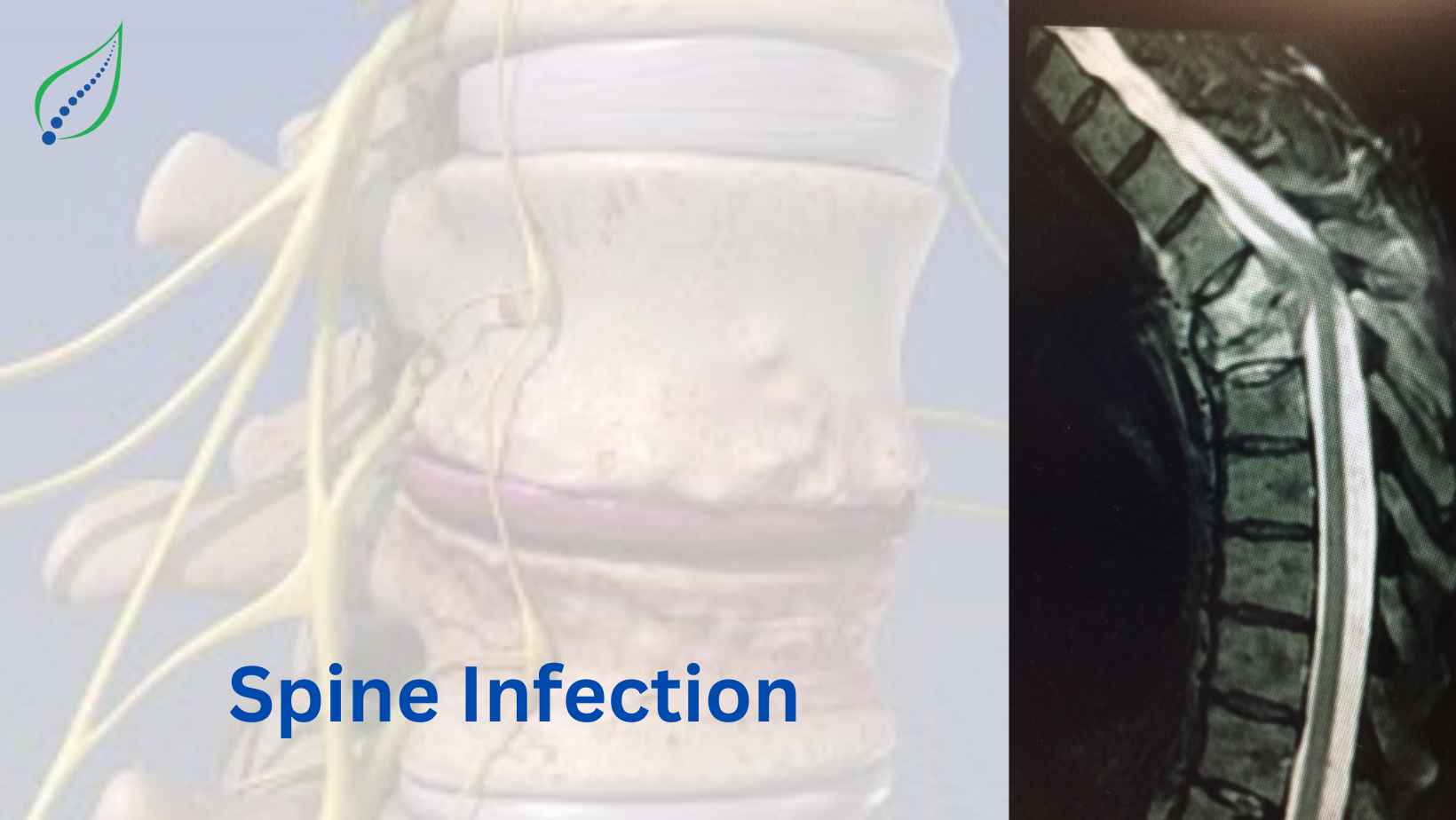Spine Infection
Spinal infection is a very rare condition but can have serious consequences. A bacterial infection of the spine involves infection in the spinal cord, discs, vertebrae, and facet joints. The infection of the spinal cord usually involves the tissues that surround it and is known as an epidural abscess. An infection of the facet joints is worsened by the abscess in the epidural region or the paraspinal muscles. It can also be an indication of infectious arthritis of the facet joints.
Spinal infections caused by bacteria are usually transported to the site of infection by the bloodstream.
Types
Spinal infections are of multiple types and involve severe pain in the back region.
Pott’s Spine: Also known as Tuberculosis of the spine. It occurs mainly at the anterior aspect of vertebral bodies most frequently at the lower thoracic vertebra. It is a combination of osteomyelitis and arthritis. This is the commonest spinal infection caused by an extra spinal infection.
Spinal Cord Abscess: This involves infection inside the spine which is a very rare occurrence. It is usually a complication of the spinal epidural abscess which is an infection and inflammation of the tissues surrounding the spine. The symptoms are fever, back pain, and declining mobility.
Spinal Epidural Abscess: This infection is usually observed in the lumbar spine and is a very painful condition. The symptoms of this condition are skin boils, tenderness and pain in the lumbar region, back pain, pain in the legs, and difficulty in bowel movements, stomach issues, and weakness in the entire body.
Vertebral Osteomyelitis: This infection is also most commonly observed in the lumbar region of the spine. If left untreated it can lead to severe mobility issues and even make walking and running extremely difficult. Its symptoms include pain in the back, arms, and legs, tenderness and weakness in the body, muscle spasms, fever chills, weight loss, difficulty in coordinating hand and leg movements.
Discitis: It is a very uncommon condition and rarely occurs on its own. Its symptoms include pain in the back and legs, fever chills, difficulty in movement of the spine and lower body.
Spinal Subdural Empyema: This infection is also normally contracted from some other infected area in the body and the bacteria is spread through the bloodstream. Pain in the limbs and fever chills are its most commonly observed symptoms.
Meningitis: This infection is characterized by an infection and resulting inflammation of the tissues surrounding the spine and the brain. The symptoms are headache, stiffness in the neck region, and fever chills. If not treated timely it can deteriorate further leading to serious complications.
Risk factors
The risk factors for spinal infection involve:
Immunosuppression due to medications such as steroids, excessive alcohol use. Cancer and AIDS patients are also at a higher risk of developing this infection.
Surgical procedures involving the spine.
- Renal failure
- Diabetes
- Old age
- Drug abuse
These are the most common risk factors which can put an individual at risk of spinal infections.
Treatment
The treatment of spinal infections caused by bacteria involves the use of antibiotics. The treatment involves intravenous or oral antibiotic therapy and other aids. Other options are over-the-counter anti-inflammatory drugs and immobilization of the spine. Immobilization is recommended in cases of severe pain to keep the spine stable.

_1742973131.png)
_1742634080.png)

